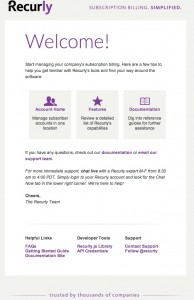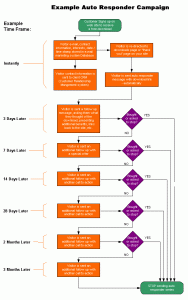— July 29, 2019

Photo: tippapatt / Adobe Stock
Small businesses in every industry wage a constant battle to capture and keep the attention of consumers in their target market. In some cases, they do so in direct competition with some of the world’s best-known brands. To cut through all of the market noise and the cacophony of competing messaging requires a high-performance strategy that delivers timely marketing and a top-notch customer experience at every point along the customer journey.
These days, small businesses have a powerful ally on their side as they attempt to do that, but only if they embrace it. The ally is data – and it can act like a force multiplier that has the power to improve just about every aspect of their operations. For the most part, the benefits come as a result of what’s known as predictive analytics, and today’s top tools to make use of it are now more accessible than ever.
If you’re not familiar with the technology’s uses, here’s a brief overview of three ways small businesses can make use of predictive analytics and what benefits it brings to the table. Let’s dive right in.
Delivering Marketing Messages Right on Time

Photo: Gorodenkoff / Adobe Stock
One of the keys to building a high-performance business marketing strategy is to develop the ability to target consumers with custom-tailored messages at exactly the right time. That’s the key to marketing that supports the customer’s journey and keeps it aligned with the business’s broader goals. Predictive analytics makes this possible by using data about the customers (or potential customers) to create an accurate profile of the steps on their journey to conversion. That profile can then be used to inform marketing campaigns, including as a means of maximizing marketing automation such as scheduled mailings, email messaging, and direct contact by sales representatives. The result is that the business provides the right nudge at the right time to capture the consumer.
Supercharging Retention

Photo: designer491 / Adobe Stock
If driving customers to convert is the first phase of the small business’s mission, the second is keeping them happy and coming back for more. Predictive analytics can help here as well, by looking at the behavior of the business’s most loyal customers and contrasting that with those who go astray. That can help to construct a model to predict customer churn that will form the backbone of the business’s customer retention strategy. Think of it as an early warning system that can alert the business that a customer may be losing interest or worse – defecting to a market rival. That warning can allow the company time to reach out to the customer to help keep them engaged, either through offering incentives, or addressing whatever issues they may be having.
Delivering Superior Customer Service

Photo: Rawpixel.com / Adobe Stock
One of the key advantages small businesses often have over their larger rivals is the fact that they’re able to deliver a more complete and personalized customer service. It’s something that helps to set them apart from the competition and is a big reason that many customers stay loyal to smaller firms, even in the face of cheaper options. For that reason, anything that can expand on this advantage is a welcome addition to the small business arsenal. As it turns out, predictive analytics works well in customer service, too. It can help a business to analyze their customer interactions to identify behavior patterns that predict future customer needs. For example, it can identify simple things, such as when incoming customer calls are likely to peak (so the business can staff up to meet the demand), or more complex patterns, like identifying common intervals between product failures. With such information in hand, the business can recommend service or replacement before the customer develops an issue – and you can’t get customer service any more right than that.
Predicting the Journey
Predictive analytics makes it possible for a small business to gain insight into every step of the customer journey, which allows them to support that journey in the best possible ways at every stage. It also serves as a trusted advisor, improving efficiency and guiding resources to where they’ll do the most good for the business. For the average small business, these are advantages that are worth their weight in gold – and that can help deliver substantial growth and exceptional bottom-line results year in and year out. At the end of the day, it doesn’t get much better than that.
Business & Finance Articles on Business 2 Community
(43)
Report Post








